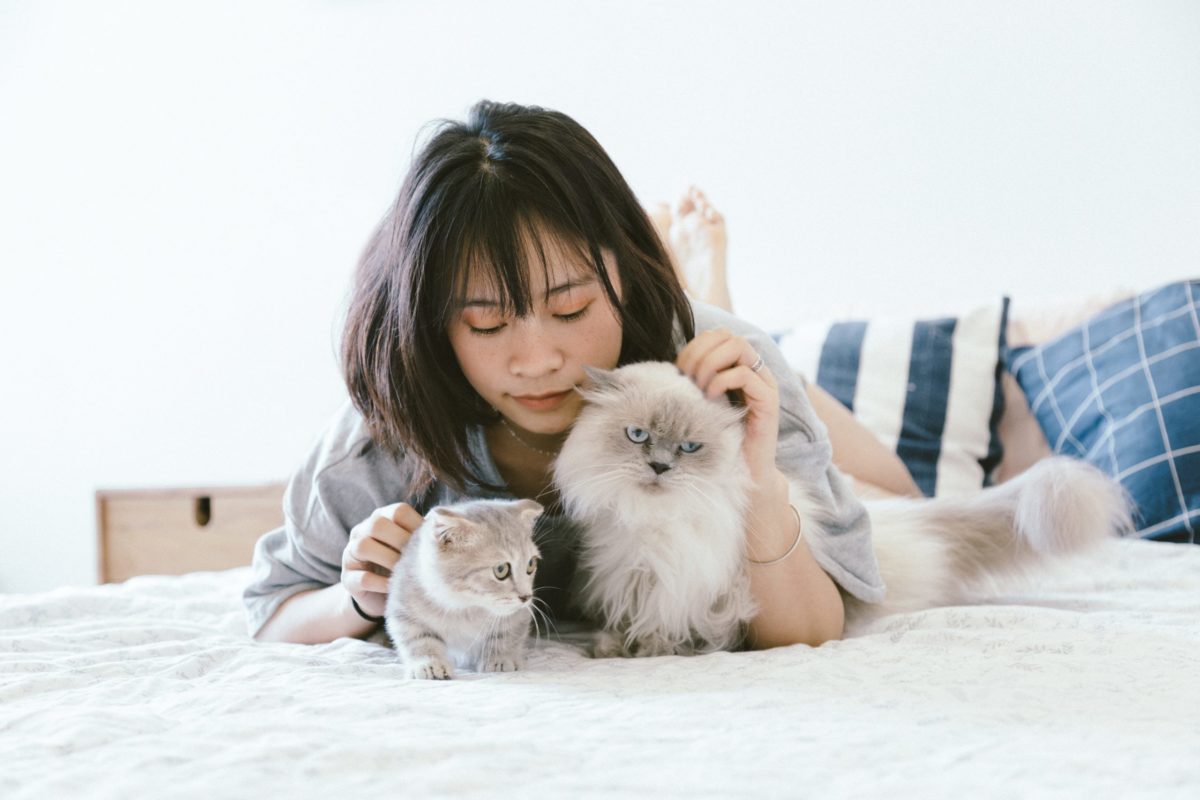National Love Your Pet Day, occurring every year on Feb. 20, offers an opportunity to reflect on the love we have for our furry friends. It’s easy to see just how abundant this love has become: Studies show that 70 percent of millennials own pets, the term “fur baby” is now a common utterance, and we’re spending more on our pets than ever before. These companions often serve as our lock screen photos, our binge-watching buddies, and our motivation for exercise — but, as these poems prove, they could also inspire us to write.
“Luke” by Mary Oliver
In addition to Oliver’s legacy as one of the most beloved poets of our time — she received tributes from Hillary Clinton, Maria Shriver, and others — the late writer received attention for her love of dogs. In fact, she devoted a whole collection, titled Dog Songs, to canine subject matter, and immortalized her pets through verse.
In “Luke,” Oliver marvels at dogs’ unconditional love and at how they embrace life, expressing a desire to take on these traits. She writes the following about taking her dog on a walk: “easily / she adored / every blossom / not in the serious / careful way / that we choose / this blossom or that blossom– / the way we praise or don’t praise– / the way we love / or don’t love — / but the way / we long to be — / that happy / … that wild, that loving.”
“The Cat’s Song” by Marge Piercy
Piercy poses with her cat in her author headshot, has spoken out about kill shelters on her personal blog, and titled her memoir Sleeping With Cats. Within its pages, she recalls that cats have been her “constant.”
Inspired by this devotion, Piercy’s “The Cat’s Song” takes a familiar trope about cats — that they are self-centered and haughty — and turns it on its head. Rather than complaining about cats’ nature, she celebrates it as a display of confidence, boldness, and grace that human counterparts can learn from.
“You feed me, I try to feed you, we are friends, / says the cat, although I am more equal than you,” Piercy writes in the cat’s voice. “Can you leap twenty times the height of your body? / Can you run up and down trees? Jump between roofs? / … Come I will teach you to dance as naturally / as falling asleep and waking and stretching long, long.”
“Goldfish Are Ordinary” by Stacie Cassarino
Those of us who have pets know that they often seem to read our emotions, and can comfort us in challenging times. In fact, research shows that pets can reduce loneliness. This might explain why many of us know someone who’s adopted a furry friend following a move or a breakup.
In “Goldfish Are Ordinary,” the speaker finds themselves in this same situation. As they visit a pet store in the midst of a relationship breakdown, they crave, “something / to distract [their] sadness, something / [they] don’t need to love [them] back. / Maybe a goldfish, the flaring tail, / orange, red-capped, pearled body, / the darting translucence.”
In response to the pet store worker’s comment “goldfish are ordinary,” Cassarino writes, “I turn back to the tank, / all of this grace and brilliance, / such simplicity the self could fail to see.”
“Birds small enough…” by Donald Revell
In an article published by the University of Nevada, Las Vegas, where he teaches poetry, Revell praised directness, accessibility, and groundedness as effective characteristics in the form. He specified, “Say what you have to say; don’t worry about finding metaphors. Use the things that your life actually handed you.” Of course, pets and animals can stand out as some of the most majestic metaphors in our everyday lives.
“Birds small enough…” plays with this concept, viewing the birds outside the poet’s window as powerful symbols of another, immortal universe. “They burst from the tree exactly / Where the mind ends and the eye sees / Another world the equal of this one / … These are birds small enough to live forever / Where the mind ends and where / My love and I once planted a cypress / Which is God to us.”
In the spirit of these poems, consider writing about a past or current pet. Think about what you learned from this pet, what larger themes this pet embodies, or how you might write from its point of view.




